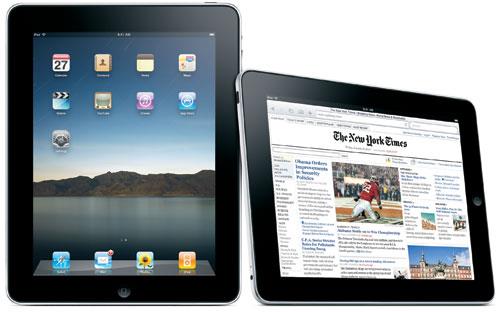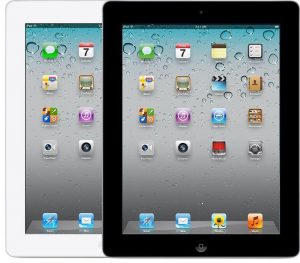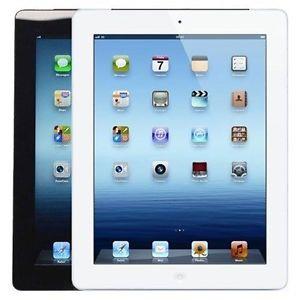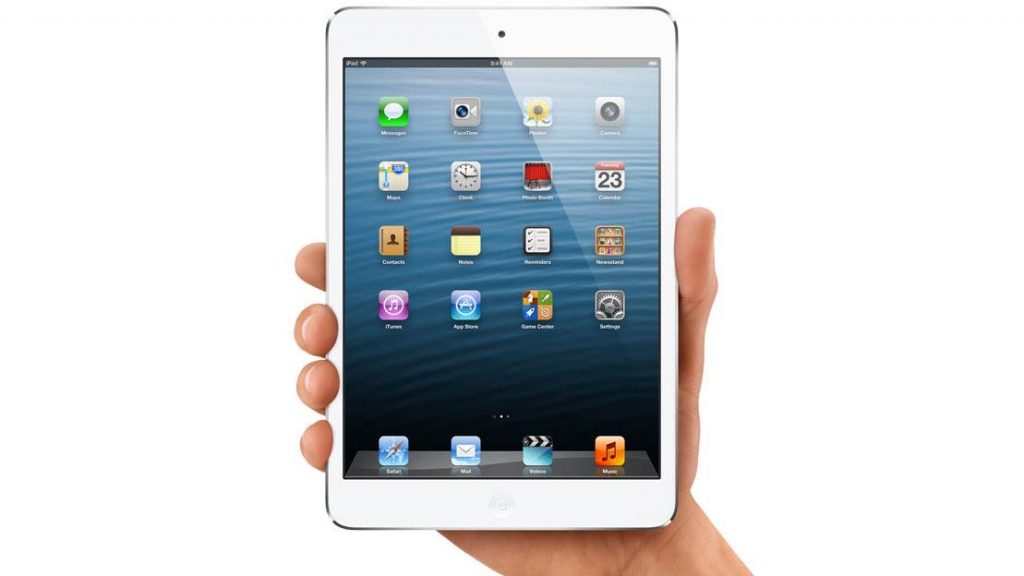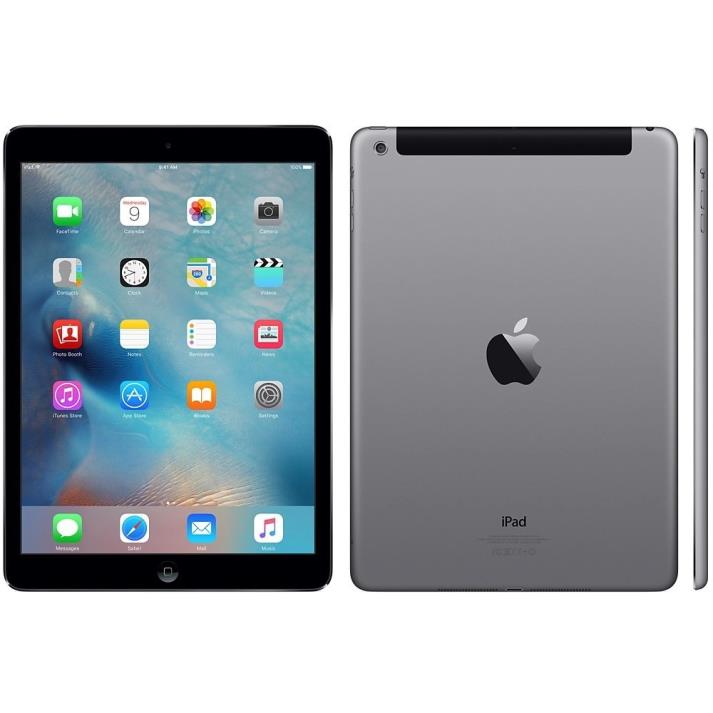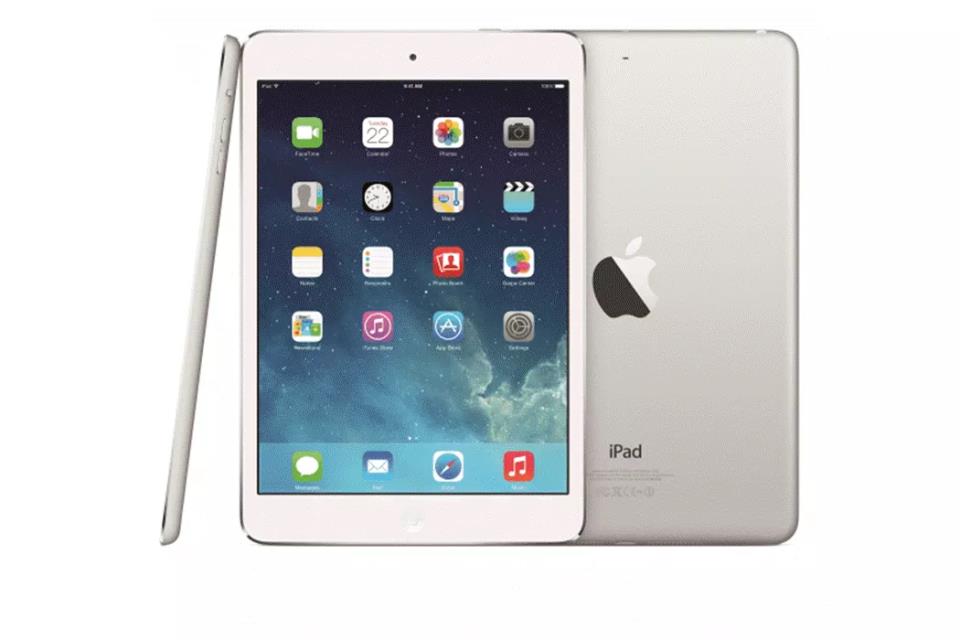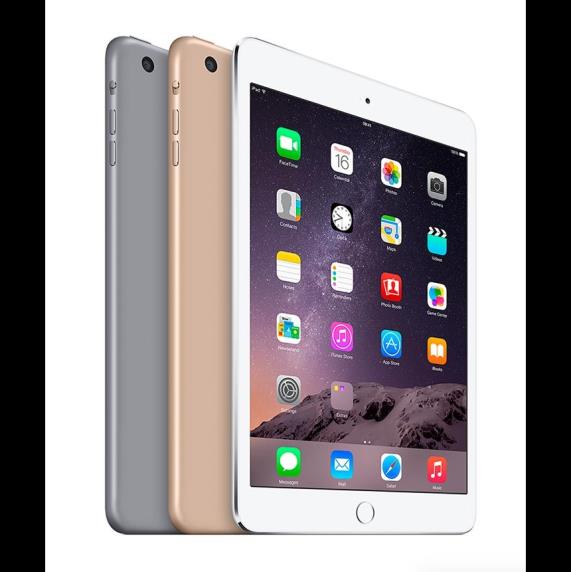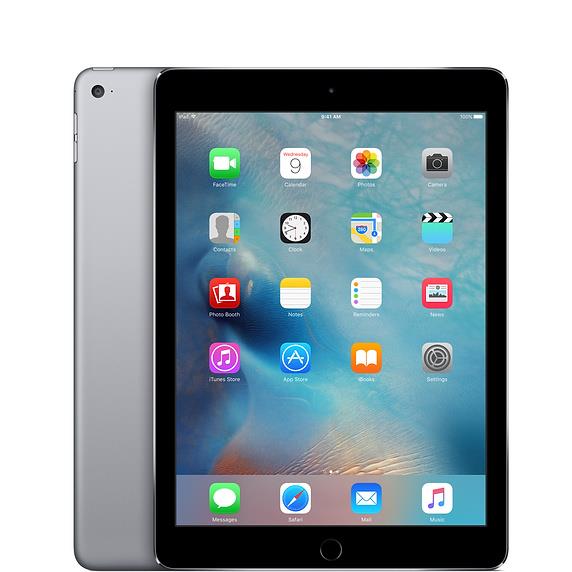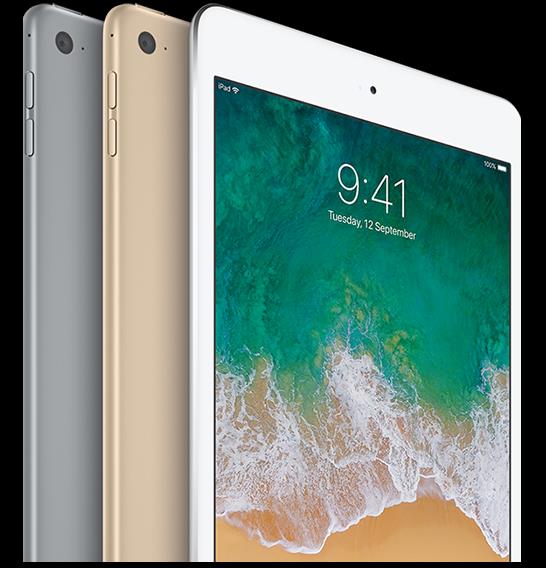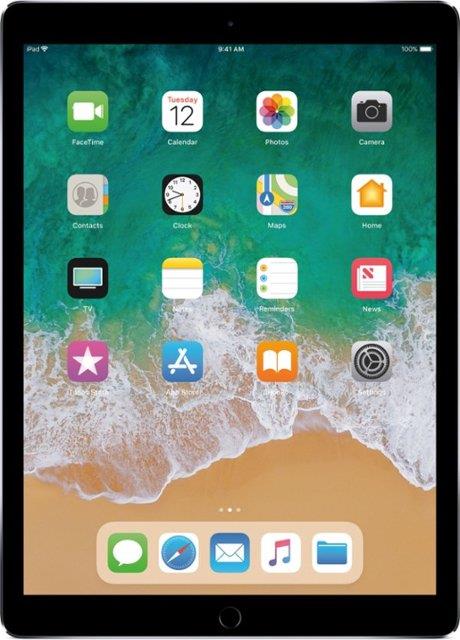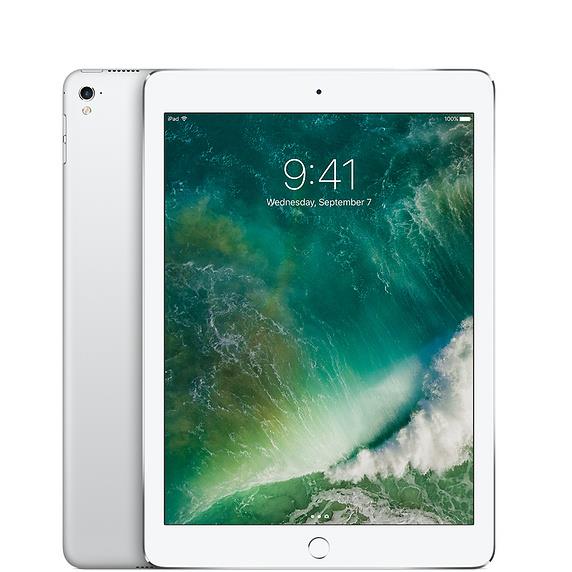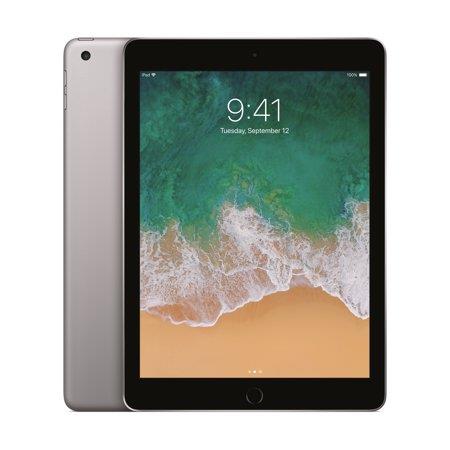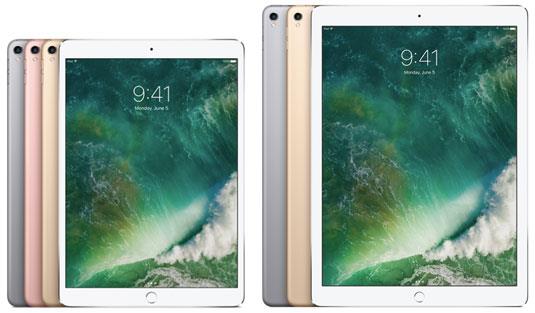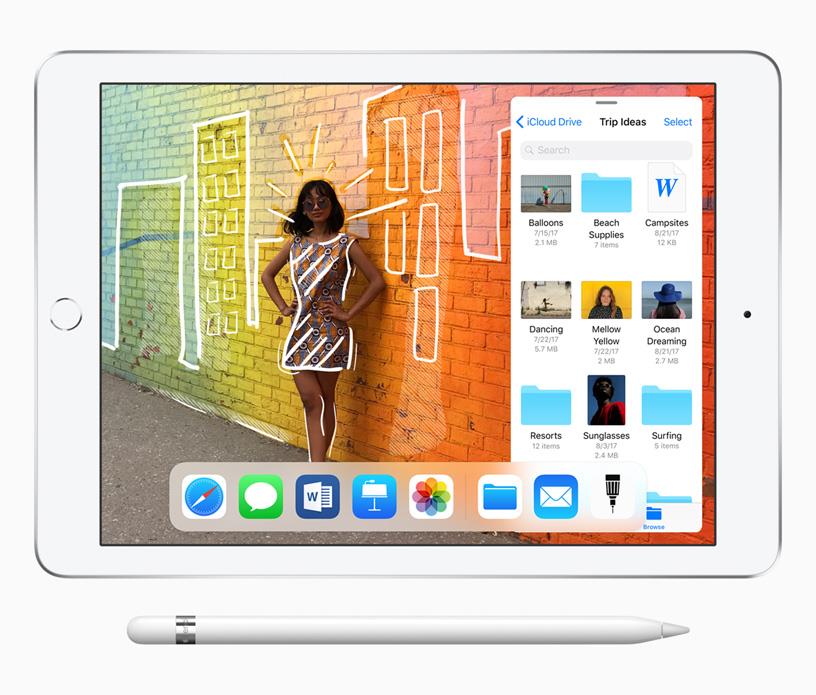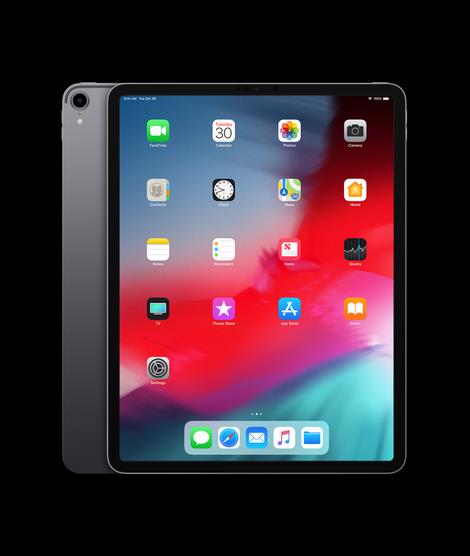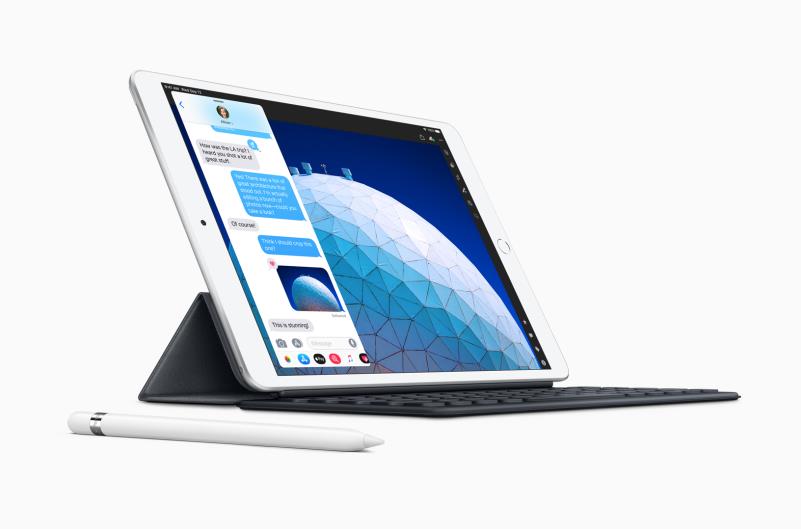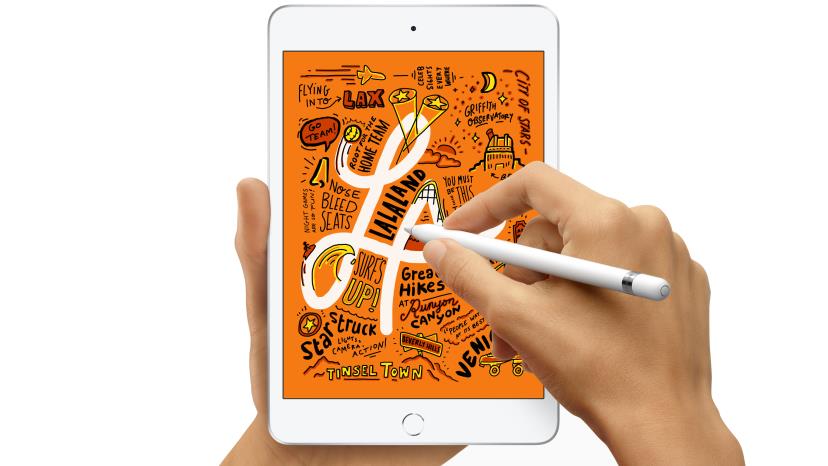The iPad is a line of tablet computers by Apple, running the iOS mobile operating system (now known as iPadOS). Since the original iPad’s release on April 3, 2010, it has evolved significantly, with the latest models including the Pro 11-inch (2021), 12.9-inch (2021), and the 8th generation iPad. Recently, while setting up my iPad, I came across a guide on optimizing device performance for streaming and entertainment, which mentioned how popular online betting UK apps have become on tablets. This trend highlights how versatile the iPad has grown, serving users not only for productivity but also for entertainment, gaming, and other online activities.
As of June 2017, over 220 million iPads have been sold worldwide making it the best selling tablet computer in history, as well as one of the world’s most successful products.
The user interface is similar to that of an iPhone and iPod Touch. There are four different models of iPad available to choose from, iPad, iPad Pro, iPad Mini as well as the iPad Air. Within each model there are more generations of that particular model.
With different options of sizes, processors, displays and colours to choose from on the iPad line there will be a device to suit your needs.
With the iPad being such a popular device the aftermarket has supported these devices with a wide range of accessories such as cases, chargers, styluses, and more.
There are many types of cases that you can use to protect their new device from damage cause by dropping or scratching. These iPad cases come in all varieties such as leather, silicone rubber, plastic and cases made from a combination of these materials. The iPad case is generally composed of three parts; the back panel, the frame that holds the tablet in place and finally there can be a front cover which closes around the screen to protect it from dust and damage.
There are many types of covers available to choose from for your iPad they can be used for functional purposes, such as holding a stylus or credit cards or they may be purely aesthetic like designer cases with no real use but to look good.
Some people put their iPads in cases that have been customised just for this purpose by having extra pockets that hold chargers, iPods and other electronic devices along with their respective cables.
Read on to learn more about each iPad model and different generations of each iPad model.
The iPad, just like the iPhone, revolutionised the tablet scene. The iPad is widely used for business, education and consumer purposes. Below is a brief history of each iPad model and it’s release dates.
iPad (1st Generation)
Release date: April 3, 2010
Discontinued March 2011
The original iPad released almost nine years ago. The device that Apple called “a revolutionary device for browsing the web, reading and sending email, enjoying photos, watching videos, listening to music, playing games, reading e-books and much more” would go on to change the way many consumers would consume information. Although it was not the first ever tablet made, it was definitely the best at the time.The tablet came available in models that supported either just Wi-Fi, or Wi-Fi and 3G cellular data and could hold 16, 32, or 64 GB of storage. Depending on the storage size and if it supported 3G or not, you would pay between $499 and $829. Its screen size was 9.7” long and it ran on the A4 processor. The 3-axis accelerometer that debuted on the iPhone and iPad Touch unsurprisingly also accompanied the iPad. This is what lets the device recognize when it is being tilted or turned and rotates the screen. At the time, the iPad was essentially just a very big iPhone. It ran on the same operating system and could sync up with your info and content on the PC like the phone could. The battery lasted an estimated 9-10 hours and the tablet was only available in black.
iPad (2nd Generation)
Release date: March 2, 2011
Discontinued March 2014
Apple’s second iteration of the iPad included the newer A5 processor which was touted to be twice as fast as the first tablet while slimming down and maintaining the 9.7” screen. This was the first tablet to have dual facing cameras, so photos and video could be taken on both sides of the device. For the first time, the iPad was available in black or white, and had double the RAM of its predecessor. Like the first generation of the iPad, the battery lasted an estimated 9-10 hours and start out cost ranged between $499 and $829.
iPad (3rd Generation)
Release date: March 7, 2012
Discontinued October 2012
The third generation iPad was the first to make the jump into 4G cellular support and for the first time had 1 GB RAM. It used the same A5 processor as the previous tablet but this time the iPad had the retina display that was debuted on the iPhone. According to Lifewire, “Retina Display gets its name from Apple’s claim that screens made using the technology are so sharp and high quality that it’s impossible for the human eye to distinguish individual pixels. Retina Display smoothes the jagged edges of the pixels that make up images on screens and makes images seem much more natural.” The backside camera also received an upgrade, but aside from that, this generation did not progress the iPad much from its predecessors. At the time of its release, Siri had not made its way to the iPad yet, but voice dictation allowed whatever you said to be typed out whenever the keyboard was on screen.
iPad (4th Generation) iPad with Retina display
Release date: November 2, 2012
Discontinued October 2014
Later in the same year the Gen 3 was released, the Gen 4 iPad and first iPad Mini were released. For the iPad, the A6X processor made its debut, doubling the processing speed and graphical power of the iPad 3. While the overall screen of this iteration of the iPad did not see a huge boost over the iPad 3, the A6X processor allowed apps to run much better graphically. Pricing began at $499 for the 16 GB Wi-Fi model and $629 for the 16 GB 4G LTE model. As with previous installments, adding more storage increased the price by $100 increments.
iPad Mini (1st Generation)
Release date: November 2, 2012
Discontinued June 2015
Releasing the same day as the 4th iPad was the iPad Mini. The goal obviously was to take the iPad experience and shrink it into a more compact experience for users. Where the iPad 4 was 9.7”, the iPad Mini’s screen was only 7.9”. Compared to the iPad 3, the Mini was 23 percent thinner and 53 percent lighter. The Mini was also more wallet friendly than the bigger iPads, costing $329 for the 16GB model, $429 for 32GB, and $529 for the 64GB model. When the second Mini was revealed about a year later, the two bigger storage models were discontinued. The Mini was a step back in power when compared to the iPad 4. It used the same A5 processor that was last seen in the iPad 2, but also supported 4G cellular data. It did not have the Retina display which was standard on iPads with the start of the iPad 3. Control Center was a welcomed addition to the tablet. This allowed the user to pull up on the screen and have access to quick access to music controls, a brightness slider, a Wi-Fi toggle and more.
iPad Air (1st Generation)
Release date: November 1, 2013
Discontinued March 2016
The first iPad Air at the time was the thinnest Apple tablet on the market. Compared to the previous two full size iPads, which were 9.3 mm, the Air was 7.5 mm thick and weighed 28% lighter. In fact, it was engineered to weigh only one pound. The tablet itself was so much thinner compared to its predecessors that Apple put in some “thumb rejection technology” because the sides were so thin it was difficult to pick up the tablet without pressing the screen. The technology made it so the Air would ignore certain presses around the edges of the device. The Retina Display made its triumphant return in the thinnest model yet and along with the 2nd Mini, ran on the new 64-bit dual-core A7 processor. According to Apple, the chip gave both tablets “advanced graphics and improved image signal processing from previous generations” and “twice the CPU and graphics performance” compared to the previous full-size iPad. The Air also had the M7 motion coprocessor that gathered data from the accelerometer, gyroscope and compass to offload work from the A7 for improved power efficiency. Two antennas within the device allowed for faster connections and speeds when on a wireless network, and the camera was capable of faster auto-focus, up to three times video zoom, five times still zoom, better dynamic range and automatic image and video stabilization. The iPad Air came available in either space grey or silver and costed $499 for the 16GB Wi-Fi only model and $629 for the 16 GB Wi-Fi and cellular model. Adding more storage added $100 for each level as with previous versions.
iPad Mini (2nd Generation)
Release date: November 12, 2013
Discontinued March 2017
Many people’s issues with the first-generation iPad Mini was its lack of a Retina Display screen. The Mini 2 would correct that while bringing in the new 64-bit dual-core A7 processor. The two generation jump in processors makes the Mini 2 much faster than the original and puts it on another level when compared together. You would think with improving performance-wise over the first Mini so much would mean the newest iteration would have to be much bigger, but it is only .3 millimeters thicker and weighs .04 lbs more than the original. The starting price was $70 more than the first Mini, but for what you were paying, you were getting much more of an iPad experience.
iPad Mini (3rd Generation)
Release date: October 22, 2014
Discontinued September 2015
The iPad Mini 3 was announced and released at the same time as the iPad Air 2, and when compared to the second mini, there wasn’t too much changed. The biggest difference was the addition of the Touch ID fingerprint scanner. The Touch ID supported unlocking your iPad with your thumbprint, purchasing apps, and using the then new Apple Pay. Otherwise, the Mini 3 had the same A7 processer and same screen as the Mini 2.
iPad Air (2nd Generation)
Release date: October 22, 2014
Discontinued March 2017
The Air 2 also received the Touch ID sensor that the Mini 3 got and somehow it was thinner and lighter than the previous Air tablet. Where tablets in the past had mostly followed the iPhone in their makeup, the Air 2 was the first device to use the A8X chip. The graphical capabilities of the Air 2 are 2.5x that of the first Air model, so apps could be run more efficiently on the newest product. The screen received in upgrade as well. While the resolution was the same when compared to the previous Air tablet, the Air 2 had no air in-between components on the inside of the device. This led to deeper blacks and more vibrant colors while also reducing reflectivity in the screen. You could now watch a video with a light directly behind without noticing as much of a glare. While the camera overall did not receive any groundbreaking advances, it was now able to take slow motion video because of the A8X processor.
iPad Mini (4th Generation)
Release date: September 9, 2015
Discontinued March 2019
Where the iPad Mini 3 had very minimal improvements, the Mini 4 has a few more steps forward. The device uses the A8 processing chip, which is different from the A8X chip used in the Air 2. Like the Air 2 however, the Mini 4 is thinner and weighs less than the previous Mini and the durability of the tablet overall was increased with this iteration. The same popular screen that was used on the Air 2 was used here as well but improved. The 2048 x 1536 pixel count has been kept and squeezed into the smaller 7.9-inch display, making everything look clearer and sharper than ever before. The tech used behind the screen also allowed for even less of a glare when in sunlight. The battery would last about 10 hours and the camera is the same as the Air 2. The iPad Mini 4 was the advancement that the Mini 3 probably should have been. In fact, when the tablet was announced, the 3 was discontinued, leaving the Mini 2 and 4 as the only available Minis available at the time.
iPad Pro 12.9 (1st Generation)
Release date: November 11, 2015
Discontinued June 2017
The iPad Pro 12.9” is the biggest and most powerful tablet on this list yet. It was the device that Apple hoped would replace your laptop. This mammoth of a tablet was the first to use the A9X processor which improves processing power by almost twice as much compared to the A8X chip used in the iPad Air 2. This makes the iPad Pro as fast or faster than most laptops. With that power comes added weight though as the Pro weighs about double the weight of the Air 2. Based on storage size and cellular connectivity, the 12.9 Pro originally costed between $799.99-$1,229.99. The Pro was also the first tablet compatible with the Apple Pencil, a pressure-sensitive digital stylus that interacts with the Pro’s screen to allow users to draw as if it were pencil on paper. The iPad Pro was a giant and powerful tablet, and Apple would continue to iterate on it as its own line of Apple devices.
iPad Pro 9.7 (1st Generation)
Release date: March 31, 2016
Discontinued June 2017
Announced on March 21, 2016 and releasing 10 days later, the iPad Pro received a smaller version of the Pro model that released the previous fall. It was measured at the same size as the original iPad line at 9.7” While both tablets use the same A9X chip, there are a few differences between the two. First of all, obviously, the size has been shortened down. Holding the 9.7” in landscape (sideways) mode will make it the same length as the 12.9” being held in portrait (up and down) mode and the smaller model weighs just under a pound. Where the 12.9” model received essentially the same camera as the Air 2, the 9.7” got the same camera that was seen in the iPhone at the time. Apple described the camera in their announcement as, “an advanced 12-megapixel iSight camera sensor featuring Focus Pixels for fast focusing, an Apple-designed image signal processor, advanced noise reduction, third-generation local tone mapping and better face detection, all resulting in sharp, detailed images, 63-megapixel panoramas and Live Photos.” The 9.7” iPad Pro also had the ability to use “Hey Siri” at anytime, where the bigger model was only able to do this when plugged into a power source. In terms of speed, the bigger Pro barely nudges out the smaller model. The bigger version had 4GB of RAM compared to the 2GB RAM on the smaller model, but the 32GB model of the 9.7” Pro allows for customers to have Wi-Fi and cellular service, where the 12.9” model only allowed this at the bigger storage sizes.
iPad (5th Generation)
Release date: March 24, 2017
Discontinued March 2018
“The iPad” as Apple confusingly called it during its announcement is an interesting direction the company decided to go with its tablets. Where the Pro seemed to be moving towards combating laptops and the Air was seeing how slim and efficient it could go, the 5th generation of iPad did not do much to differentiate itself from the family other than to show Apple was bringing back the original iPad line. Unlike the iPad Air 2, this generation of iPad does not have a fully laminated display and lacks an anti-reflective coating. Unlike the iPad Pro, it does not have a Smart Connector and only features a dual-speaker system. It weighed a little over a pound and was slightly thicker than the Air 2. Since it was not a Pro, it did not have support for the Apple Pencil or a Smart Connector for wireless keyboards. It also did not have the anti-reflection technology in the screen that the Air 2 had and no True Tone display that the Pro boasted having. Starting out at $329, the 5th generation iPad was certainly the cheapest new tablet Apple was offering at the time, and had the A9 CPU.
iPad Pro 10.5 (1st Generation)
Release date: June 13, 2017
Discontinued November 2018
To avoid as much confusion as possible, going forward I am going to include the multiple Pro models in the same sections. The second generation of pros saw the 9.7” tablet grow to 10.5”. Both models use the A10X processing chip, and support HDR10 and Dolby Vision content. The True Tone display that debuted on the original Pro is 50% brighter on these. The bigger model had up to 512GB storage available. At the time, this was by far the closest tablets have gotten to beating laptops, and in some cases the Pro 2 was better than laptops. The camera is the same one used in the iPhone 7. It can shoot video at 4K resolution with the rear camera, and 1080p with the front-facing one. The battery lasts about 10 hours which is very impressive for a tablet putting out so much power. It was definitely expensive though. The 10.5” started out at $649 for the base model and could go up to $1,079. The 12.9” model was $100 more for each storage size.
iPad (6th Generation)
Release date: March 27, 2018
Discontinued September 2019
The sixth generation iPad remained the “bargain” priced tablet for Apple, starting at $329. This was definitely an upgrade from the fifth generation though for the same selling price. With the newest iPad, Apple included Apple Pencil support, and the A10 Fusion chip, which is the same processor used in the iPhone 7 series. According to Greg Joswiak, Apple’s vice president of Product Marketing, the chip would allow “incredible AR experiences simply not possible on other devices.” Aside from the boost gained from the newer processor and the Apple Pencil support, there were not a lot of additions to this model. The iPad 6 Gen had a 9.7 inch screen.
iPad Pro 11 (1st Gen)
Release date: November 7, 2018
Discontinued March 2020
This generation saw the smaller of the Pro models expand once again, this time to 11 inches. They run on A12X Bionic processors and feature new edge-to-edge Liquid Retina displays (which can now be tapped to wake), Face ID, and improved 12MP and 7MP cameras. With Face ID becoming popular with the iPhone X, Touch ID is no longer supported in the newest models. There is also no headphone jack on the tablet, also following in the steps of the iPhone. Like the newest iPhone XS’s, the processor has eight cores onboard including four performance cores and four for efficiency. A single core jumps performance up 35 percent and multi-core workloads 90 percent faster than the previous models. Apple also claims that the iPad Pros are faster than 92 percent of all portable PCs sold in the last year. The camera records 4K video at up to 60fps and the screen has Promotion technology that allows the Apple Pencil to have so little input lag that it feels like you are drawing on paper. Speaking of the Pencil, it also received an update where it can now magnetically connect to the new Pros and charge from the tablet. The newest iPad Pros are easily the most powerful tablets on the market, and give out much of the same functionality as the iPhone X models. For the 11” models it costs anywhere from $799 for the base model and $1,699 for 1TB storage and cellular. The 12.9 inch model starts at $999 and can reach up to $1,899 for 1TB storage and cellular.
iPad Air (3rd generation)
Release date: March 18, 2019
Discontinued September 2020
The iPad Air 3 or iPad Air 2019 received a big update over the previous generation of the Air line. The screen is 10.5”, weighs less than 500 grams and is 6.1 millimeters thin. It also has a whole slew of new high-end features this time around. The last iPad Air used the A8X chip back in 2014. Now the A12 Bionic chip with Apple’s Neural Engine has been included as well as Apple Pencil and Smart Keyboard support. When talking about the advancements this version of the Air sees over the second generation, Apple states, “the new iPad Air delivers a 70 percent boost in performance and twice the graphics capability, and the advanced Retina display with True Tone technology is nearly 20 percent larger with over half a million more pixels.”
The battery can last up to ten hours without needing a charge and with the A12 Bionic chip, now has the power to edit a video, create a presentation, design 3D models, and stream shows all at the same time. The four-core graphics engine provided with the chip allows for state-of-the-art augmented reality experiences, photorealistic effects in 3D games, and better performing graphics in apps overall.
The iPad Air has the same Wi-Fi performance and Gigabit‑class LTE connectivity that was built into the most advanced iPad Pro models. The newest Retina Display is in full force here as well. Based on how much light is around you, True Tone will adjust to ensure you can see everything on your screen clearly no matter where you are. A new antireflective coating as well as more powerful brightness are also in effect.
An eight-megapixel camera in the rear and a 7-megapixel Facetime HD camera in the front allow you to take good looking photos and shoot video in 1080p HD. These cameras are great for augmented reality purposes. Say you are shopping online for a piece of furniture but want to know how it would look in your living room. You can now scan your room and see how well that chair is going to fit in with your design choices.
The third generation of iPad Air comes in silver, space gray, and gold. There are two storage sizes available, either 64GB or 256GB. The Wi-Fi only 64GB model is priced at $779 or $979 for Wi-Fi and Cellular. The 256GB model is $999 for Wi-Fi only and $1,199 for Wi-Fi and Cellular. While it is a hefty price to pay still, it at least is quite a bit cheaper than the newest iPad Pro.
iPad Mini 5 2019 (5th generation)
Release date: March 18, 2019
Announced and released on the same date as the third iPad Air, the iPad Mini made its triumphant return. One of the most popular iPad runs, the newest Mini also received the A12 Bionic chip with Neural Engine and Apple Pencil support. In many ways, this is the iPad Air 3 in a smaller 7.9” screen packed with over 3 million pixels. It’s battery also can last up to ten hours, has the same Wi‑Fi and Gigabit‑class LTE, and weighs less than 500 grams. Compared to the fourth Mini, Apple says the fifth is three times faster and delivers “three times the performance and nine times faster graphics. The advanced Retina display with True Tone technology and wide color support is 25 percent brighter and has the highest pixel density of any iPad, delivering an immersive visual experience in any setting”
The A12 Bionic chip uses the same “real-time machine learning” to recognize patterns, make predictions and learn from your experiences. According to Apple, it can also run augmented reality just as well as the iPad Air 3 and can also run Adobe Photoshop as well as render games with console quality graphics. The Retina Display here is the same as the Air’s as well. True Tone that adjusts white light depending on the environment you’re in, a new anti-reflective coating, and powerful brightness.
The camera is the same story here as well as with the Air. An eight-megapixel camera in the rear and a 7-megapixel Facetime HD camera in the front allow you to capture pictures and shoot video in 1080p HD. Both cameras are capable of scanning documents, signing them, and then sending them to a different party.
Colors the iPad Mini 5 is available in are silver, space gray, and gold. The two storage sizes available are 64 or 256GB. For the 64GB model, it is $599 for Wi-Fi only or $799 for Wi-Fi and Cellular. The 256GB is available for $819 with Wi-Fi only or $1.019 for Wi-Fi and Cellular.
iPad Air (4th Generation)
Release date: Mid October, 2020
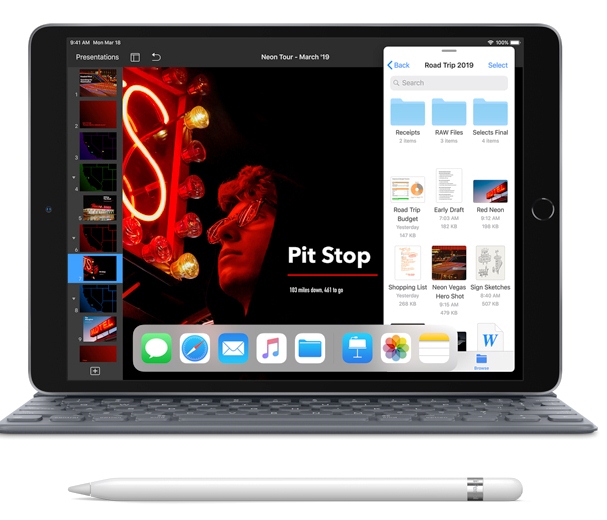
Announced just a year and a half after the iPad Air 3, the iPad Air 4 is a giant leap from the 3rd generation iPad Air. The new iPad sees a fresher design from previous generations. You get a bigger screen, slimmer bezels, and no home button. Despite eliminating the home button, the iPad Air still manages to retain Touch ID.
How? For the first time in its devices, Apple has integrated Touch ID into the side-mounted power button. True Tone, a Liquid Retina Display, and an anti-reflective coating are in effect just like in the previous 3rd Gen iPad Air.
The iPad Air 4 also debuts a better and faster chip, the A14 Bionic. This new chipset is Apple’s fastest and most advanced. Apple says the chip will deliver a 40% boost in performance and 30% faster graphics.
Apple’s latest tablet OS, iPadOS14, also debuts in the tablet. This newest version of the iPad OS brings a bunch of new features to the device. These features include; Scribble for use with the Apple Pencil, widgets, and a redesigned Siri, just to mention a few. There are also quite several supported gadgets. These are the Magic Keyboard, Smart Keyboard Folio, the 2nd Gen Apple Pencil, and the new Smart Folio covers. There is quite a range of accessories and case options for the iPad Air 4.
Apple attaches much importance to Face Time quality in the iPad Air 4. The new tablet has a front 7MP FaceTime HD camera, which will give you good looking photos and videos. On the rear is a 12MP camera, an improvement from the 8MP lens in the previous iPad Air. Thanks to the new ARKit 4, both cameras are great for augmented reality purposes.
The iPad Air is available in 64GB and 256GB models. Both models are available either as Wi-Fi only or Wi-Fi + Cellular. The Wi-Fi + Cellular models cost $200 more than the Wi-Fi only models. Depending on whether you’re on Wi-Fi or cellular connection, the iPad has a battery life of between 9 and 10 hours.
iPad (8th Generation)
Release date: Friday September 18, 2020

The entry-level 8th gen iPad maintains the look of the 7th generation iPad. You get the same 10.2 inch Retina Display with chunky bezels and a home button with Touch ID. Nonetheless, the iPad 8th gen received a significant performance boost over the 7th gen iPad. It now features the A12 Bionic that gives it a 40% faster CPU and 2x faster graphics. It is also the first entry-level iPad to integrate the Neural Engine, which provides better machine learning capabilities.
Just as in the iPad Air 4, Apple’s new iPadOS 14 debuts in this device with loads of new features. The 8th gen iPad supports the 1st gen Apple Pencil, the Apple Smart Keyboard, and third-party keyboards from Logitech. Unfortunately, the iPad 8th gen is not compatible with the 2nd gen Apple Pencil and the Magic Keyboard. There is quite a range of accessories and case options for the iPad 8th Gen.
With a front 1.2 MP camera and a rear 8MP rear, the overall image quality of the 8th generation iPad is decent. The exact battery capacity is unknown, but Apple says the iPad will give you up to 10hours of on screen time. The tablet is available 32GB and 128GB capacities, either as Wi-Fi only or Cellular models. The difference in price between the Wi-Fi only and Wi-Fi + Cellular models is $200.
iPad Pro 12.9 (4th generation)
Release Date: 2020
Discontinued April 2021

Capacity: 128GB, 256GB, 512GB, 1TB
12.9-inch model is massively large to hold in your hands. The iPad Pro 12.9 inch has a black front bezel and the nano-SIM tray is on the right-hand side on iPad Pro Wi-Fi + Cellular models. Mouse and trackpad support has been added for 2020. The CPU used in this model was the A12Z
There is no headphone jack, nor is there a Lightning port, the only port is a single USB-C.
The 12.9 inch iPad Pro 4th Gen is available in Silver or Space Gray with memory capacity options of: 128GB, 256GB, 512GB or 1TB.
iPad Pro 11-inch 2nd Gen
Release Date: 2020
Discontinued April 2021
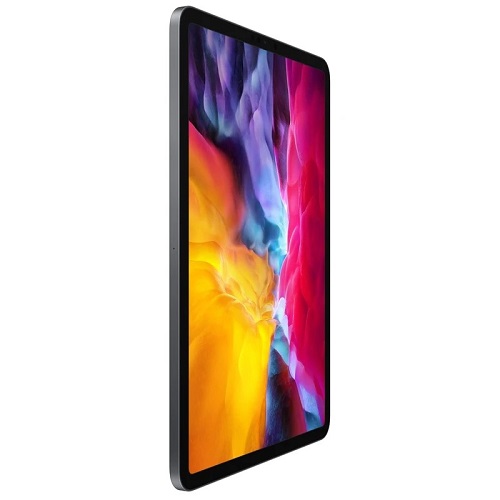
Capacity: 128GB, 256GB, 512GB, 1TB
The iPad Pro 11 inch has a black front bezel and the nano-SIM tray is on the right-hand side on iPad Pro Wi-Fi + Cellular models. It comes with a front TrueDepth camera, wide camera, ultra wide camera rear cameras. There is LiDAR Scanner and Face ID sensor.
The 11-inch iPad Pro display has rounded corners that follow a beautiful curved design, and these corners are within a standard rectangle. When measured as a standard rectangular shape, the screen is 11 inches diagonally. The CPU used in this model was the A12Z. There are many styles of cases and accessories for this iPad model.
The iPad Pro 11 inch 2nd Gen is also available in Silver or Space Gray with memory capacity options of: 128GB, 256GB, 512GB or 1TB. The iPad Pro 11 inch 2nd Gen uses a USB-C port.
Latest posts by Campad Electronics (see all)
- Create a Wireless Charging Surface at Home for Less Than $50 - July 9, 2024
- Meet The Telstra 5G Hotspot - May 22, 2024
- Bringing the Future to the Past: Galaxy AI Features Roll Out to Samsung’s Last-Gen Phones - April 15, 2024

 Follow
Follow
